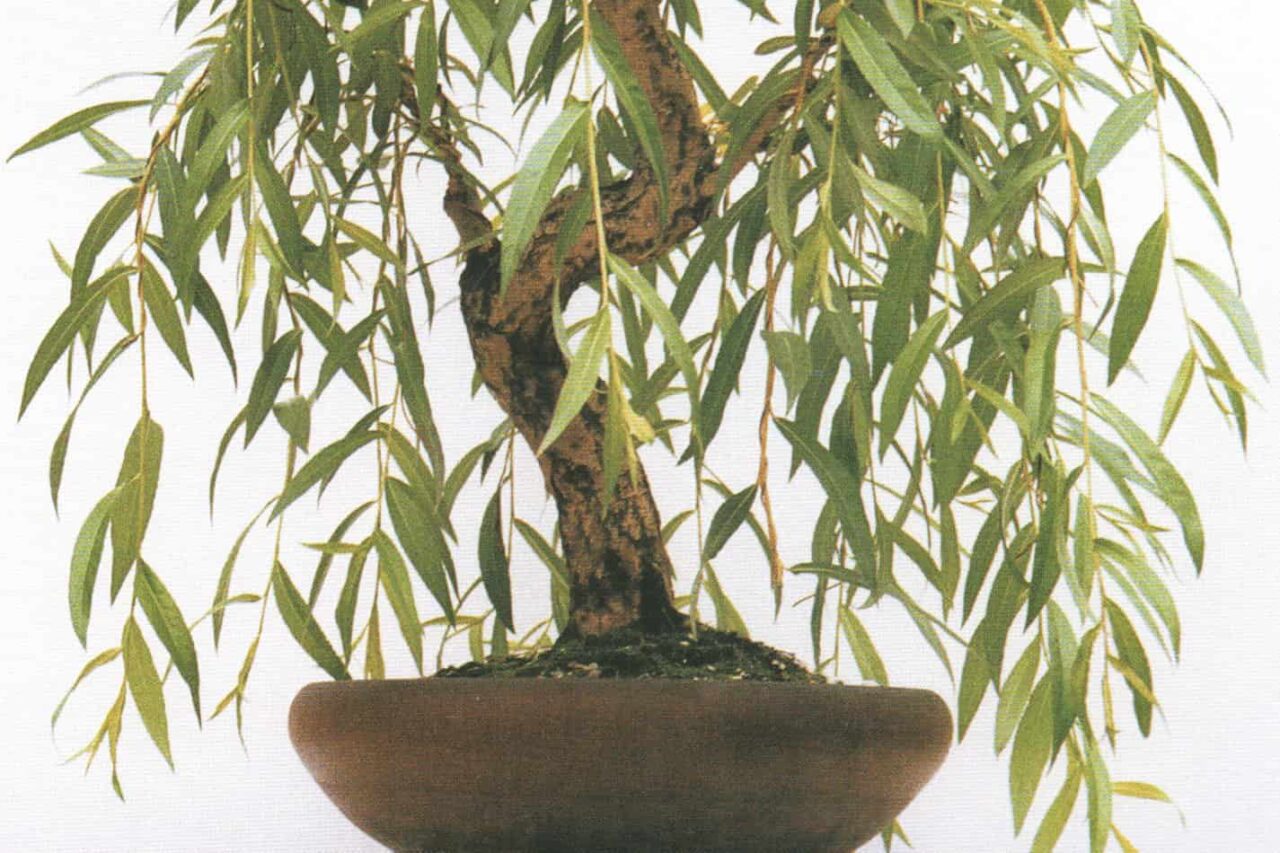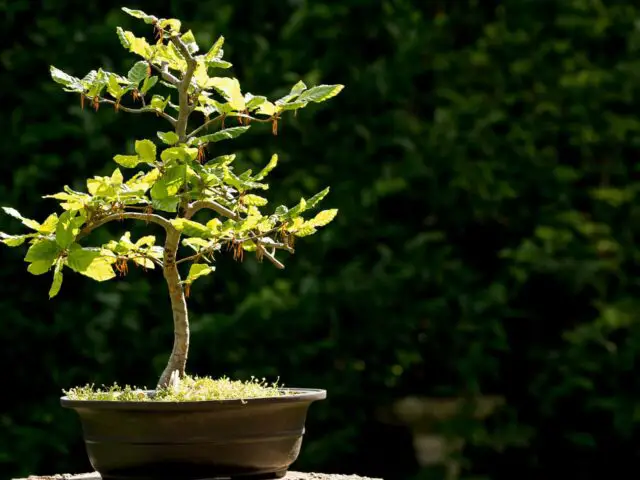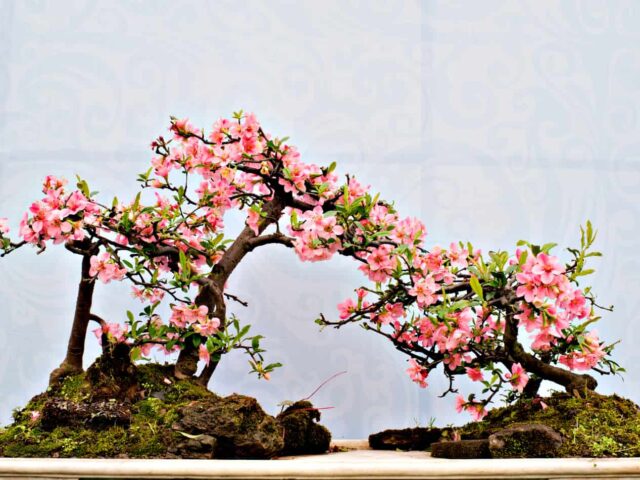Bonsai is an art that has been practiced for centuries. It is popular among nature lovers all around the world. If you are new to bonsai art, you are probably learning about different bonsai trees. Someone might have suggested having a weeping willow bonsai. So, you may wonder: What is a weeping bonsai and how can you take care of it?
The Weeping willow bonsai is one of the most popular bonsai trees. People admire weeping willow bonsai for their dropping branches, leaves, and flowers. It is also well-known for its constantly changing appearance throughout different times of the year.
However, weeping willow bonsai trees are often difficult to take care of. So, you have to take good care of it. In this article, you will find all the necessary information to take care of a weeping willow bonsai.
Before that, let us learn more about weeping willows.

Introduction To The Weeping Willow
The weeping willow is native to China and can be found throughout Asia and in many European countries. It also grows in the United States. Weeping Willows are popular for having branches and foliage that droop toward the ground.
Willows can grow up to 30 to 50 feet tall. Unfortunately, these trees have a shorter life span of 25 to 30 years. Willows thrive in moist soil. They mostly grow near ponds, lakes, and rivers.
The weeping willow is a splendid choice for making a bonsai tree. I love how the trees change their color. In spring, the trees have silvery or yellow catkins that look amazing. At this time, the green leaves are long and thin.
Then, in autumn, the color of the leaves turns golden yellow, and eventually, they fall off. The weeping bonsai still looks nice because of the dropping shapes of the branches.
The most popular weeping willow type for bonsai is the Salix Babylonica, but other varieties like Salix x sepulcralis and Salix alba ‘Tristis’ are also great for bonsai.
How To Bonsai Weeping Willow?
Growing a Weeping Willow bonsai can be challenging for new bonsai artists. But do not let this information discourage you. If you are interested in getting a Weeping Willow bonsai, you should definitely get one.
There are primarily three ways to start with a Weeping Willow Bonsai- getting a starter bonsai, growing from cuttings, and growing from seeds.
Getting A Starter Pack
This is the easiest way to have a weeping willow bonsai. A beginner-level bonsai artist can buy a starter Weeping Willow plant, a bonsai pot, wire, and soil. Then you have to trim the excess leaves and branches of the tree.
Plant the tree in the pot, and wire the branches of the tree to your desired shape.
Growing From Cutting
If you want to grow your own weeping willow bonsai, you can either grow it from a tree branch or plant seeds. The cutting process is much easier. You can take a branch from a normal-sized willow, remove the leaves, and cut it into smaller sections.
Leave the branches to soak in a bucket full of water until you see root formation. Take the cuttings and plant them in the nursery pots. Then let them grow a bit and wire them later to turn into bonsai.
Growing from Seed
You might want to experience the complete process of growing a weeping bonsai. In that case, you can obtain some seeds and plant them in a suitable pot. You have to provide a sufficient amount of sunlight, water, and plant food to grow healthy plants.
Beginner bonsai artists may find it challenging to grow Weeping Willow from seeds, as it takes a lot of care. However, expert bonsai lovers often make bonsai trees from scratch.
How To Take Care Of Weeping Willow Bonsai?
Before you get a weeping willow bonsai, you need to know how to take care of it. You must have good knowledge of bonsai placement, watering, pruning, wiring, fertilizing, and repotting before getting a weeping willow.
Here are the factors you need to keep in mind to take care of your first Weeping Willow bonsai:
Growing Season
A Weeping Willow bonsai is an outdoor, deciduous tree. So, the weeping bonsai prefers a warm, sunny environment to grow in. The temperature should be between 80 and 90 degrees F during the growing season of weeping bonsai. If the temperature gets too high, put it under partial shade.
Since weeping willow bonsai trees need warm weather, they have to be taken good care of in winter.
The roots of the bonsai can die because of low temperatures. So, you must protect it. If the bonsai is in a pot or container, keep it indoors in a warm environment.
However, if you have planted the bonsai in your garden, protect it from cold wind and snow by mulching it.
Watering
Weeping Willow bonsai is one of those bonsai trees that require lots of water to stay healthy. As you know, normal weeping willows typically grow near rivers, lakes, and swaps. The soil has to stay moist.
If the bonsai is exposed to direct heat for over 10 hours a day, water it at least twice a day. The weeping bonsai should not go without water for 2 weeks.
However, you should not over-water your bonsai. Examine the soil in the pot to understand when you should water it. If the soil is dry, water your bonsai.
But do not water the bonsai if the soil is moist. Do not let water sit close to the root for too long. The excess water should pass through the drainage hole at the bottom of the pot.
Fertilizing
A Weeping Willow bonsai requires a moderate amount of fertilizer for strength and resilience to disease. During its growing season, you can apply organic fertilizer every six weeks.
If you use liquid fertilizer, apply it every two weeks. Avoid using chemical fertilizers as they can harm the leaves.
Pruning and Wiring
During the growing season, a weeping willow bonsai can grow really fast. So, you have to prune the excess branches or leaves to maintain the shape. Wiring also needs to be done in the growing season.
In winter, prune the unwanted shoots that come out of the trunk or other parts of the bonsai. Leave only some buds and trim the branches for new growth in the growing season.
Soil and Repotting
The soil in the pot for weeping bonsai should be capable of soaking up a lot of water, like sandy loam soil. The soil needs to drain the excess water and fertilizer to prevent over-watering and nutrient toxicity.
Since weeping bonsai trees grow roots quickly, you have to re-pot the bonsai every year. The roots spread in the pot quickly and take up all the space. When you re-pot the bonsai, make sure to prune it well.
Propagation
Weeping Willows are one of the easiest trees to propagate. You can do it just from small cuttings of the tree. You can put branch sections submerged in a water container. In a few days, you will see roots formatting on the branches.
It is even possible to use the thick and large parts of a weeping willow tree to propagate.
Pests and Diseases
If water gets stuck in the pot for a few days, mold can grow on your weeping bonsai. So, keep the soil moist but not too wet. Besides, insects like blights, caterpillars, and mites can severely affect the bonsai without proper care. To avoid insect infestation, check the bonsai every day.
Check the underside of the leaves to make sure there are no pests. You can use normal water to spray away the insects. If the pests keep coming back, spray pesticides to exterminate them.
Conclusion
By now, you must have understood what is weeping bonsai? Weeping Willow bonsai trees look amazing and beautiful. When lovely flowers bloom on the bonsai, it looks even more attractive.
Although it is challenging to maintain a Weeping Willow bonsai, you can learn to take care of it. So, get your first Weeping Willow bonsai and follow the rules in this article to maintain it.






